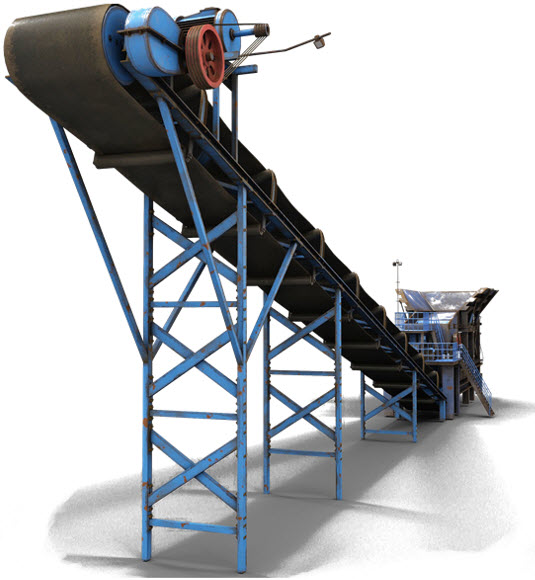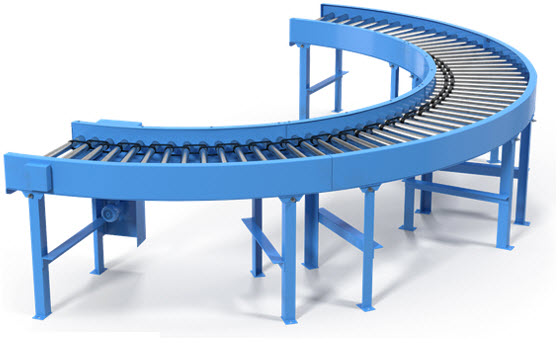Conveyor Specialist create custom conveyor systems that keep companies moving forward – fast!
Our experienced team work with a wide range of industries, understanding all the relevant rules and regulatory requirements and budget challenges, to bring your project in one time under budget. We, Conveyor Specialist, work only with high quality materials and respond rapidly to all customer’s needs and requests.
You will find Conveyor Specialist custom conveyors work in aggregate and concrete, construction, food processing, mining, quarrying and in many more industrial environments.
Conveyor Specialist can offer competitive quotations for conveyors, meeting a full range of customer specifications. We offer mechanical components for the conveyors from well-known suppliers. We have delivered strong relationships with several specialty fabricators, to build the conveyors to our detail and specifications. We believe that utilizing a select few fabricators on a repeat basis, improve quality and better control of fabrication schedule. Conveyors are shop assembled. Shop assembly not only reduces costly field labor, but prevents misfit problems. We totally shop assemble short conveyors that can be shipped in one piece.

Conveyor Terms
Angle of Incline
The degree a conveyor is tilted from horizontal.
Drive Pulley
Pulley connected to a power source, used to drive the conveyor. Usually the drive pulley is the head pulley, but on some kinds of systems, including many package handling conveyors, the drive pulley is located underneath the conveyor.
Gravity Take-up
Device used to remove slack and stretch in a conveyor belt. A free weight is suspended from a pulley on the return side of the belt. The take-up is free to lower as needed to remove any slack as the belt operated. The gravity take-up is usually located as close to the drive pulley as possible.
Head Pulley
Pulley at discharge end of belt. The head pulley is usually powered by conveyor drive source. Pulley “pulls” belt along the conveyor.
Return Idler
Idlers used to support the belt as it passes underneath the conveyor structure.
Roller Bed
Free-wheeling rollers on which the carrying side of the belt rides.
Screw Take-up
Device utilizing a bolt construction, used to lengthen the conveyor to remove slack in the conveyor belt. By moving a bolt, the tail pulley is pushed away from the head pulley, thus removing slack from the belt.
Slider Bed
A smooth, flat surface (usually stall or wood), beneath the carrying side of the belt.
Snub Idler
Idler used to increase the amount of belt in contact with the pulley, or to deflect the belt in a different direction. Snubbing a belt near a pulley can increase the effective tension at the pulley.
Tail Pulley
Pulley at the beginning of the carrying run of the conveyor. The tail pulley is usually free-wheeling.
Troughing Idler
Grouping of idlers of the carrying side of the conveyor designed to make the conveyor belt curve into a cupped shape, increasing conveyor capacity. Troughing idlers are usually 20°, 35° or 45°.
Skirtboard Rubber
Skirtboard rubber is primarily used at the loading point, to guide the product into the center of the belt and to prevent spillage.

Roller Bed Conveyors
As the name suggests, the surface of this type of conveyor is made up of rollers that are selected to match production requirements, such as the weight or required speed of the products that will move along the conveyor. Shorter conveyors that fall under ths type can be made up of just two rollers. However, as the distance between the two ends of the conveyor increases, more will be needed for the belt to function.
Roller conveyors are a series of rollers supported within a frame where objects can be moved either manually, by gravity, or by power.
There is a wide range of ways roller conveyors can be used and modified for different uses, including transporting boxes, cardboard boxes, crates, pallets, plastic totes, polybags, slave boards and trays. A roller conveyor system can be configured to work with a range of ancillary equipment including bends, gates and turntables.
Roller conveyors are normally used in environments, such as warehouses or manufacturing facilities due to the nature of transporting goods. Using roller conveyors, can add diversity to the type of transfers, diverters and stops, that can be used as part of a conveyor system or automation system. You can get roller conveyors in mild steel, galvanized, plastic or stainless steel.
APPLICATIONS: You can use these conveyors for packing, sorting, assembling, inspecting and transporting items. Common applications of roller bed conveyors include postal sorting, offices and airport baggage handling systems.

